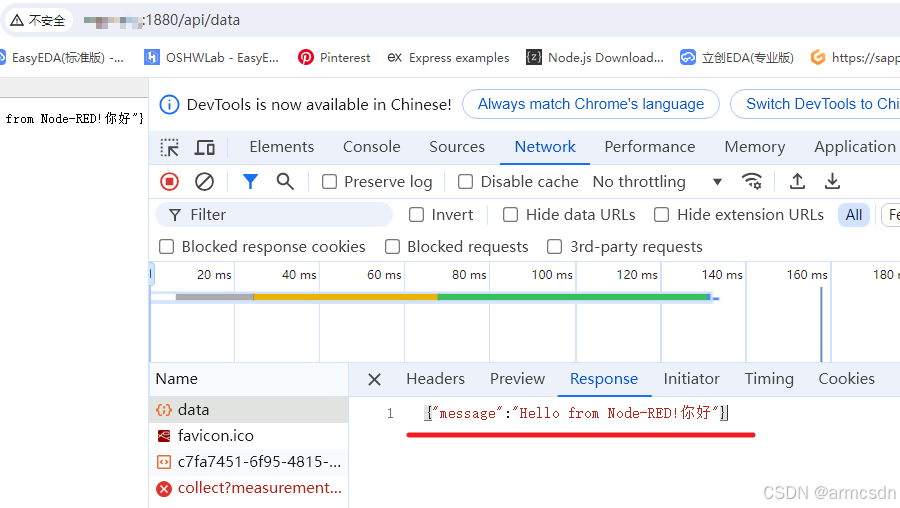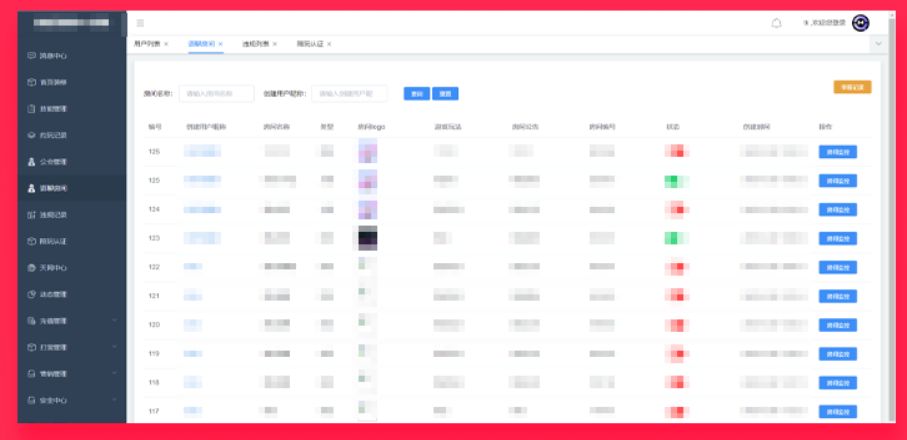为了学习在vue3中如何使用axios,我借Sider Fusion的帮助搭建了基于node的简易测试环境。
Axios 是一个基于 Promise 的 HTTP 客户端,通常用于浏览器环境,但它也可以在 Node.js 环境中使用。因此,可以在 Ubuntu 的 Bash 环境下通过 Node.js 使用 Axios。
步骤:
-
安装 Node.js 和 npm:
如果您尚未安装 Node.js,请通过以下命令安装(通常会包括 npm):sudo apt update sudo apt install nodejs npm您可以检查安装是否成功:
node -v npm -v创建项目:创建一个新的目录并进入:
-
mkdir my-axios-app cd my-axios-app初始化 npm:
-
初始化一个新的 npm 项目:
npm init -y安装 Axios:
-
使用 npm 安装 Axios:
npm install axios编写 Axios 脚本:
-
创建一个新的 JavaScript 文件,如
app.js:nano app.js打开
app.js,然后添加以下代码:const axios = require('axios'); axios.get('http://www.xxxxx.cn:1880/api/data') .then(response => { console.log('Response from Node-RED:', response.data); }) .catch(error => { console.error('Error:', error); });运行脚本:
-
使用 Node.js 运行脚本:
node app.jsNodeRed节点




-
[ { "id": "6f67ed6250fc6293", "type": "tab", "label": "流程 4", "disabled": false, "info": "", "env": [] }, { "id": "cbeb42c4ff466487", "type": "debug", "z": "6f67ed6250fc6293", "name": "debug 20", "active": true, "tosidebar": true, "console": false, "tostatus": false, "complete": "false", "statusVal": "", "statusType": "auto", "x": 600, "y": 200, "wires": [] }, { "id": "71b003bcbda86c27", "type": "function", "z": "6f67ed6250fc6293", "name": "function 10", "func": "msg.payload = { message: \"Hello from Node-RED!你好\" };\nreturn msg;", "outputs": 1, "timeout": 0, "noerr": 0, "initialize": "", "finalize": "", "libs": [], "x": 430, "y": 200, "wires": [ [ "cbeb42c4ff466487", "a7ce06a8882a6108" ] ] }, { "id": "06cfce3558445895", "type": "http in", "z": "6f67ed6250fc6293", "name": "", "url": "/api/data", "method": "get", "upload": false, "swaggerDoc": "", "x": 250, "y": 200, "wires": [ [ "71b003bcbda86c27" ] ] }, { "id": "a7ce06a8882a6108", "type": "http response", "z": "6f67ed6250fc6293", "name": "", "statusCode": "", "headers": {}, "x": 610, "y": 260, "wires": [] } ]实际代码测试及结果,url请换成自己的域名

nodered返回的结果
使用POSTMAN测试及结果

Google Chrome测试及结果





















